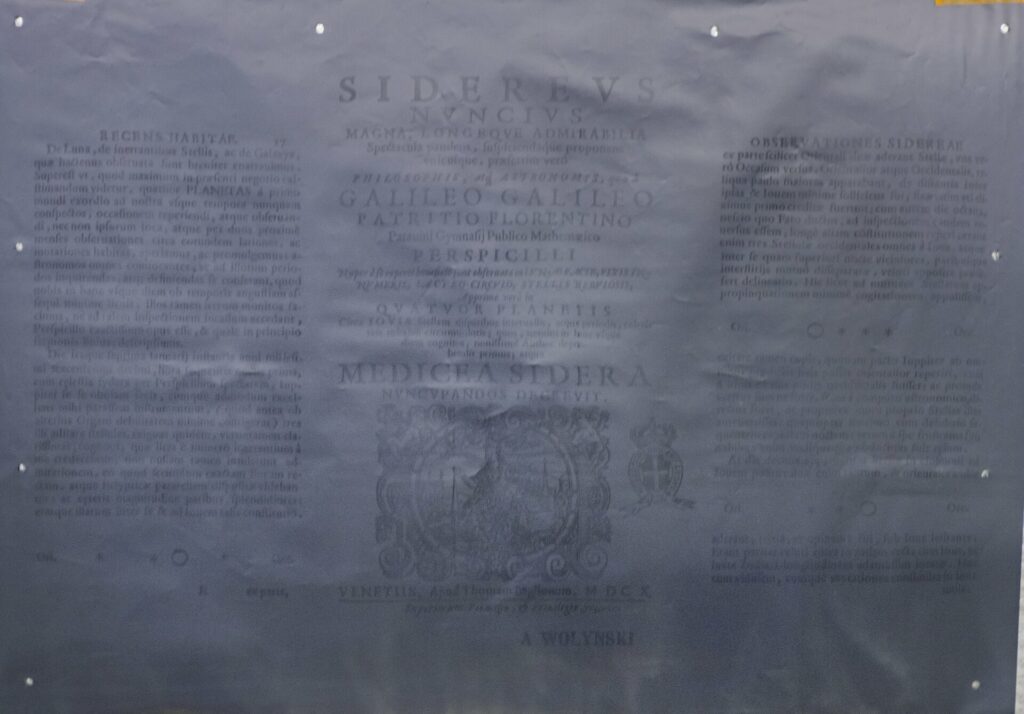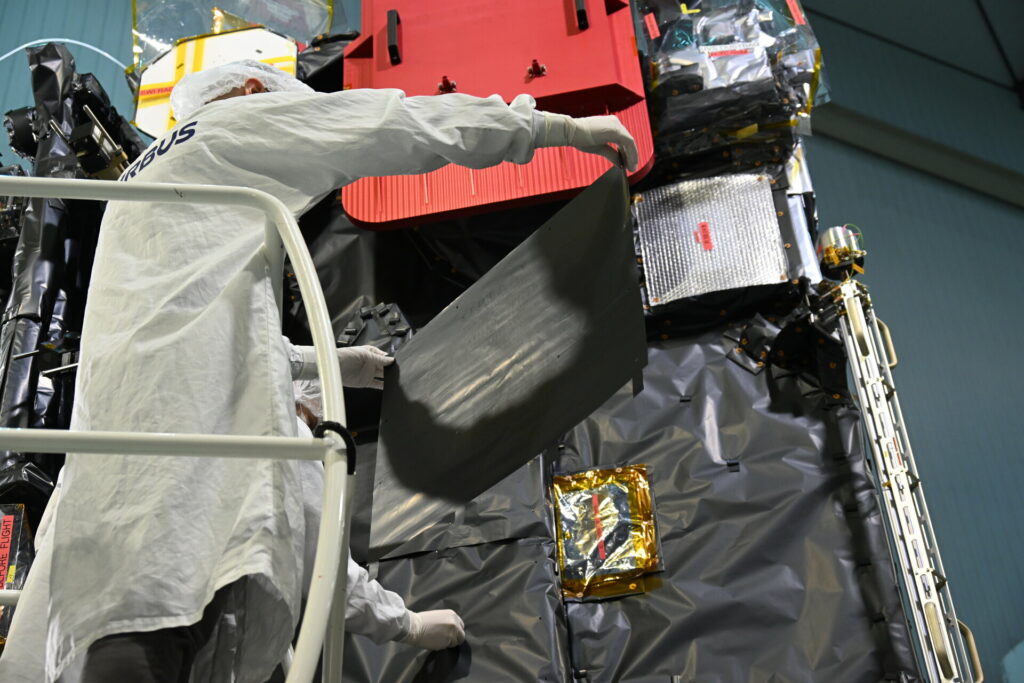Airbus specialists installed a commemorative plaque on the body of the JUICE spacecraft. It has an image of several pages from the treatise Sidereus Nuncius. In it, Galileo Galilei reported the discovery of the four largest moons of Jupiter.
Treatise that changed the history of astronomy
Contrary to popular misconception, Galileo is not the inventor of the telescope. Moreover, he wasn’t even the first to use it to observe various celestial objects. However, it was Galileo who was the first to publicly talk about his findings in the work of Sidereus Nuncius.

Sidereus Nuncius was published on March 13, 1610, becoming the first ever article written based on the results of observations with a telescope. In it, Galileo reported on a number of discoveries that forever changed the history of science. He saw mountains on the Moon, found out that the Milky Way band actually consists of many stars invisible to the human eye, and also discovered four moons of Jupiter, known to us now under the names Io, Europa, Ganymede and Callisto (Galileo himself called them “Medici stars” in honor of his patrons). Their discovery dealt a final shock to the geocentric system of the world.
Preparing to JUICE launch
The installation of a commemorative plaque was the final touch before sending the JUICE probe to the Kourou cosmodrome in French Guiana. It will take place in February. Next, JUICE will be prepared for the launch scheduled for April.

The main purpose of the JUICE mission is to explore Europa, Ganymede and Callisto — the three largest icy moons of Jupiter, under the surfaces of which oceans of liquid water can hide. The probe should study these worlds and assess their potential suitability for life. The flight plan assumes that JUICE will reach the Jupiter system in 2031.
According to https://www.esa.int
Follow us on Twitter to get the most interesting space news in time
https://twitter.com/ust_magazine

